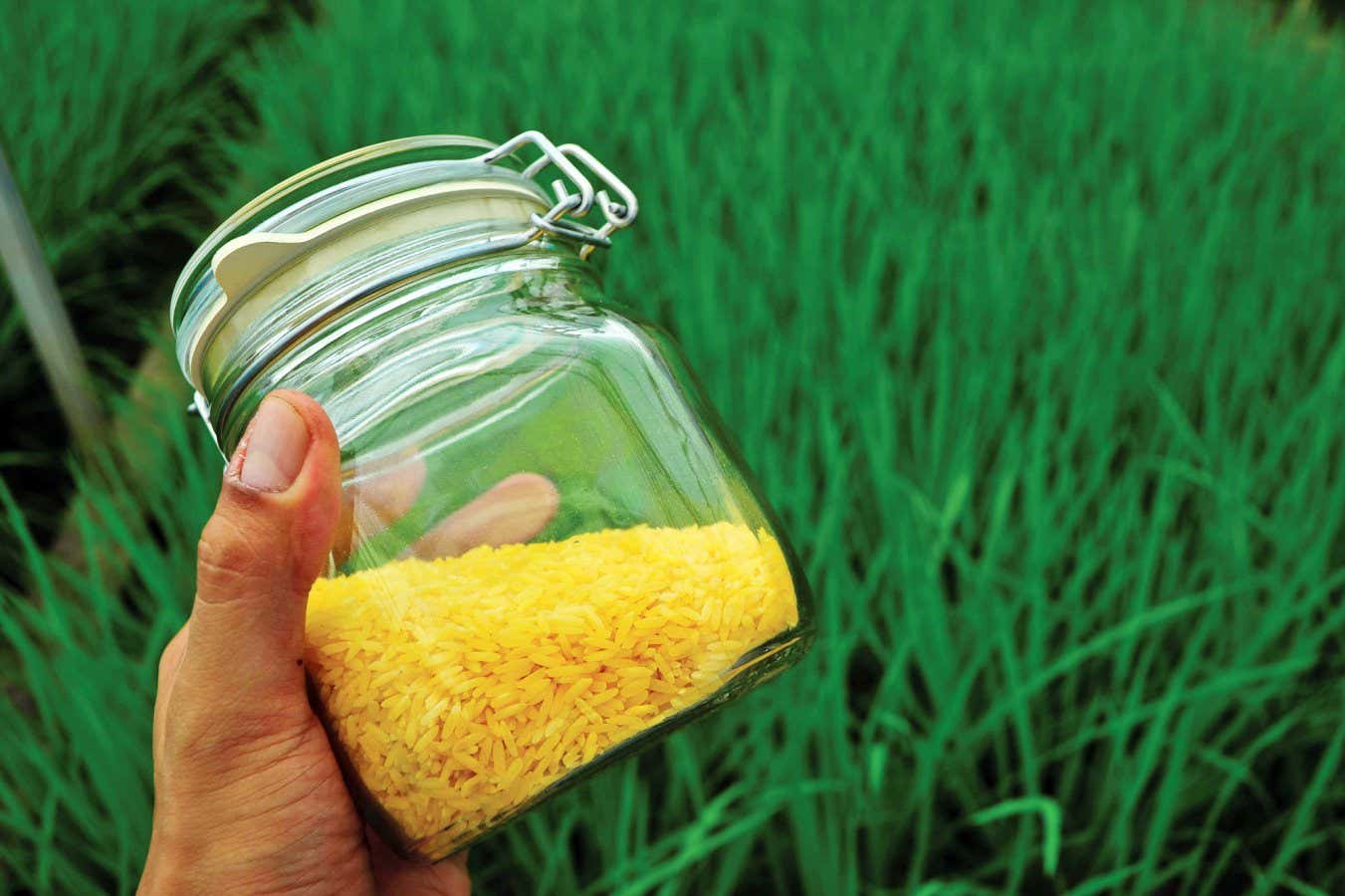Golden rice is genetically modified to produce beta-carotene, a precursor to vitamin A
IRRI
Farmers in the Philippines will be able to continue to grow genetically modified golden rice to combat malnutritiondespite a court decision revoking the planting license.
The Philippine government will oppose the decision, says Adrian Dubock, a member of the Golden Rice Humanitarian Council who guided the creation of the rice. “An objection will be filed with the court of appeal and I assume it will be successful,” he says.
Golden rice was developed to combat vitamin A deficiency, a leading cause of disability and death worldwide. It is estimated to result in up to half a million children go blind every yearhalf of whom die within a year.
This is entirely preventable if children consume foods that contain sufficient vitamin A or vitamin A precursors such as beta-carotene. This orange pigment, found in vegetables such as carrots, is converted into a vitamin by the body.
In the 1980s, a group of scientists decided to genetically modify rice to contain beta-carotene, which became known as golden rice due to the color of the pigment.
The project became one of the main targets of activists who oppose genetically modified crops, greatly delaying the adoption of golden rice. “The suspicion fueled by Greenpeace has been very effective,” says Dubock.
In 2021, the Philippines became the first country to approve the cultivation of golden rice – which is known there as malusog or healthy rice – having previously approved as safe to eat. It has also been approved for consumption in the USA, Canada, Australia and New Zealand. The growth and consumption of rice is promoted by the Philippine Rice Research Institute, a government-owned corporate entity.
This means that in the last three years, people who could benefit from rice have finally been able to eat it. For example, this year, the city of San Mateo introduced golden rice into its feeding program for severely underweight children. A recent study found that 1 in 6 children under the age of 5 in the Philippines are vitamin A deficient.
But on April 17, the Philippine Court of Appeal revoked the license for golden rice as a result of a case brought by Greenpeace Southeast Asia and other groups.
“This decision is a monumental victory for Filipino farmers and the Filipino people who for decades have stood up against genetically modified (GM) crops,” said Wilhelmina Pelegrina, Greenpeace Southeast Asia campaigner. said in a statement.
Dubock says he understands the court decision is based on certain technical errors made during the approval process. “I have to assume the Philippine government will win the appeal,” he says.
In a statementthe Philippine Rice Research Institute said it is analyzing the implications of the court’s ruling to prepare its response.
Scientists have also applied for a license to grow golden rice in Bangladesh, but the country has been delaying a decision since 2017. “The need is greater than in the Philippines,” says Dubock.
There is also a significant amount of vitamin A deficiency in many countries in Africa, he says.
Dubock hopes that independent studies will compare the health of children who eat golden rice with other types and that the results will encourage the adoption of golden rice in more countries.
Topics:

